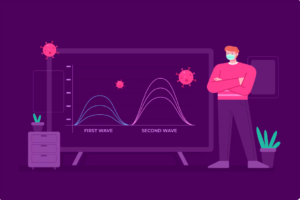In 2025, real-time customer engagement is no longer a “nice-to-have” it’s a competitive advantage. As brands race to deliver instant support, contextual marketing, and conversational commerce, the WhatsApp Business API has emerged as a game-changing tool. But to unlock its full potential especially when building a WhatsApp chatbot proper backend integration is crucial.
This article walks you through how to integrate the WhatsApp Business API with your backend systems in 2025, ensuring secure, scalable, and smart conversational workflows that drive engagement and growth.
Why Integrate WhatsApp with Your Backend?
While front-end tools like chat UIs and bot builders grab attention, it’s the backend integration that determines how responsive, personalized, and intelligent your WhatsApp experiences truly are.
Backend integration helps you:
- Sync WhatsApp conversations with your CRM or database
- Trigger messages based on user behavior or events
- Process automated replies via your WhatsApp chatbot
- Handle media, documents, and templates efficiently
- Route conversations to live agents using business logic
- Manage compliance, rate limits, and delivery tracking
If you want to go beyond static replies and build intelligent, automated journeys backend integration is non-negotiable.
Step 1: Understand WhatsApp Business API Architecture
In 2025, Meta’s WhatsApp Business API (WABA) operates on a cloud-hosted model (WABA Cloud API), replacing the older on-premise setup. Here’s what’s important:
Key Components:
- Meta’s WhatsApp Cloud API: Centralized cloud service hosted by Meta.
- Business Account (WABA): Your official WhatsApp Business profile.
- Phone Numbers: Registered and verified under your WABA.
- Access Tokens: Used to authorize API requests.
- Webhooks: Real-time events triggered when a user sends a message, clicks a button, or interacts with your chatbot.
The API itself is RESTful, using JSON for data formatting and HTTPS for communication.
Step 2: Set Up Your WhatsApp Business API Account
Before you can integrate with your backend, you need to register for and configure your WhatsApp Business API profile:
- Create a Meta Business Manager Account
- Verify Your Business with Meta
- Add a Phone Number for WhatsApp
- Register with a BSP (Business Solution Provider) like MSG91 or use Meta Cloud API directly
- Get API Access Credentials (Access token, WhatsApp ID, and phone number ID)
If you’re using a BSP like MSG91, much of this is streamlined for you.
Step 3: Build or Connect a WhatsApp Chatbot
Your WhatsApp chatbot will handle the actual conversations — answering questions, qualifying leads, processing orders, etc.
Chatbot Platforms (Optional):
- Dialogflow
- Microsoft Bot Framework
- Rasa
- MSG91 Bot Builder
- Custom Node.js/Python bots
Whether you use a platform or custom code, your bot must be able to:
- Parse incoming messages
- Respond with contextually appropriate replies
- Maintain conversation state (optional but helpful)
- Integrate with backend databases and systems
Step 4: Connect WhatsApp API to Your Backend
Now, it’s time to integrate the WhatsApp API with your own backend typically built on Node.js, Python (Flask/Django), Java, PHP, or similar technologies.
A. Set Up Webhooks
Meta sends incoming message events to a URL (your webhook). You must:
- Expose a public HTTPS endpoint (e.g., using NGROK during development or via cloud/VPS in production)
- Handle GET requests for webhook verification
- Handle POST requests for incoming messages
Webhook Example (Node.js/Express):
javascript
CopyEdit
app.post(‘/webhook’, (req, res) => {
const body = req.body;
if (body.object) {
body.entry.forEach(entry => {
const message = entry.changes[0].value.messages[0];
console.log(“Incoming message:”, message);
// Call your backend or chatbot here
});
res.sendStatus(200);
} else {
res.sendStatus(404);
}
});
B. Send Messages from Your Backend
To send messages, make a POST request to the WhatsApp endpoint:
bash
CopyEdit
POST https://graph.facebook.com/v19.0/{{Phone-Number-ID}}/messages
Authorization: Bearer {{Access-Token}}
Content-Type: application/json
Message Payload:
json
CopyEdit
{
“messaging_product”: “whatsapp”,
“to”: “919876543210”,
“type”: “text”,
“text”: {
“body”: “Hi! How can I assist you today?”
}
}
This can be triggered based on user actions in your backend (e.g., new order, missed call, form submission).
Step 5: Add Intelligence via Backend Logic
With WhatsApp messages flowing in and out, your backend can now add business logic to customize responses and automate actions.
Backend Use Cases:
- CRM sync: Save user name, preferences, last message
- E-commerce: Fetch product details, send order updates
- Ticketing: Create support tickets and share status via WhatsApp
- Banking: Validate OTPs, check balances securely
- Healthcare: Confirm appointments, send prescriptions
Use your chatbot to route the flow, and the backend to pull real-time data, compute logic, and push tailored responses.
Step 6: Handle Media, Templates & Buttons
Modern conversations are rich and interactive. Your backend should support:
- Templates: Pre-approved messages (e.g., reminders, updates)
- Quick Replies & Buttons: To guide conversations
- Media: PDFs, videos, product images
- Location & List Messages
Use these features in combination with backend triggers to deliver a delightful chatbot experience.
Step 7: Secure Your Integration
Security is paramount in 2025. Here are best practices:
- Use HTTPS for all webhooks and API calls
- Store access tokens securely
- Validate Webhook Signature Headers
- Rate-limit outbound requests
- Log and audit all critical actions
- Encrypt sensitive customer data
Sample Architecture for WhatsApp Chatbot Integration
pgsql
CopyEdit
+——————+ +——————–+
| User on | <—-> | WhatsApp Cloud API |
| WhatsApp Mobile | +——————–+
+——–^———+ |
| v
+——–+———-+ +————————+
| Webhook Listener | –> | WhatsApp Chatbot |
| (Node/Python) | +————————+
+——–|———-+ |
| v
+——–+———-+ +————————+
| Backend Services | <-> | CRM / Database / APIs |
| (e.g., Order DB) | +————————+
+——————-+
This architecture allows seamless handling of messages and backend actions.
Common Integration Challenges (and Fixes)
Challenge
Fix
Message delays
Check rate limits, optimize logic
Duplicate messages
De-duplicate based on message ID
Token expiration
Use long-lived tokens or refresh automatically
Non-delivered templates
Use approved templates only and monitor status
API errors
Implement retries and fail-safes
Unlocking the Power of Conversations
Integrating the WhatsApp Business API with your backend is the key to scaling personalized, intelligent customer engagement in 2025. When paired with a smart WhatsApp chatbot, you create a seamless conversational experience — one that drives conversions, improves support, and boosts satisfaction.
By automating the right touchpoints, syncing data, and delivering rich content in real-time, your business can turn WhatsApp from a messaging platform into a revenue-generating channel.
Ready to go live with your WhatsApp chatbot and backend integration?
Check out MSG91’s WhatsApp Business API Platform for developer-friendly tools, bot builders, and ready-to-integrate solutions.















